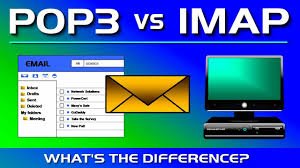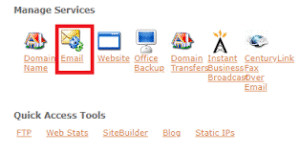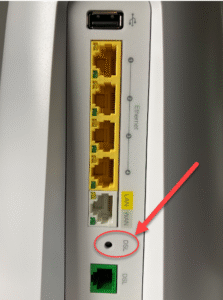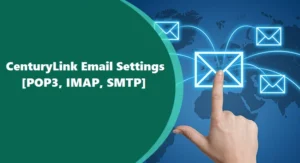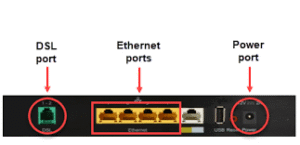Choosing the right email protocol often confuses users setting up CenturyLink accounts. While both IMAP and POP3 connect your email client to the CenturyLink server, they work in very different ways. Understanding how each protocol manages messages helps you select the option that suits your workflow. A poor choice may cause missing emails, cluttered inboxes, or syncing issues across devices.
This guide explains the differences between CenturyLink IMAP and POP3, their strengths and weaknesses, and which one works best for your specific needs. By the end, you’ll know how to configure your CenturyLink email account with confidence.
Why Email Protocols Matter for CenturyLink Users
CenturyLink email runs smoothly through a web browser, but most people prefer using desktop or mobile clients like Outlook, Windows Mail, or Thunderbird. These clients require connection protocols to access the mailbox stored on CenturyLink servers. IMAP and POP3 are the two available methods.
Using the wrong protocol can create unnecessary problems. For example, messages may disappear from your inbox or fail to appear on multiple devices. Since most users today manage email on laptops, smartphones, and tablets simultaneously, the right choice has become even more important.
Understanding IMAP with CenturyLink
How IMAP Works
IMAP, short for Internet Message Access Protocol, stores emails on the CenturyLink server. When you open a message in your client, it loads a copy from the server instead of downloading it permanently. This means the original remains intact on the server until you delete it.
Key Advantages of IMAP
IMAP keeps everything synchronized across all devices. When you read a message on your phone, it shows as read on your laptop. When you delete something in Thunderbird, it disappears in Windows Mail as well. Folder structure also remains consistent, ensuring that sent, draft, and archived items look the same no matter where you check.
IMAP also works well for users who travel frequently or switch devices often. Since all data lives on the server, you never lose messages even if your computer crashes or your phone stops working.
Considerations with IMAP
IMAP depends heavily on a strong internet connection. Since it pulls data directly from the server, slow or unstable connections can delay loading. In addition, accounts with limited storage may fill up quickly because IMAP keeps everything on the CenturyLink server until you delete or archive messages.
Read Also: Setting Up CenturyLink Email on Windows Mail and Thunderbird
Understanding POP3 with CenturyLink
How POP3 Works
POP3, or Post Office Protocol version 3, operates differently. Instead of leaving messages on the CenturyLink server, it downloads them to your device. Once downloaded, the messages usually disappear from the server unless you adjust settings to leave a copy online.
Key Advantages of POP3
POP3 suits users who access email from a single device. Since messages download locally, you can open them without internet access. For people with slow connections, this feels faster since the client loads data from local storage rather than pulling it from the server every time.
POP3 also helps manage server space. Because emails move off the CenturyLink server after download, the risk of hitting storage limits decreases.
Considerations with POP3
POP3 causes issues for users with multiple devices. If you download a message on your laptop, it may not appear on your phone. Sent items and drafts may also remain fragmented, since each device keeps its own copies without syncing. For modern workflows that depend on flexibility, POP3 often feels outdated.
CenturyLink IMAP vs POP3: Main Differences
Both IMAP and POP3 allow access to CenturyLink accounts, but the experience differs. IMAP maintains constant synchronization across devices, while POP3 creates isolated copies. IMAP uses more server storage but delivers a seamless experience, while POP3 reduces server usage but sacrifices consistency.
For most users, IMAP proves more reliable. It aligns with today’s digital habits, where smartphones, tablets, and desktops all access the same inbox. POP3 still holds value for people who prefer local storage or work in areas with poor connectivity.
Choosing Between IMAP and POP3 for CenturyLink
When IMAP Makes Sense
If you rely on multiple devices, IMAP is the obvious choice. CenturyLink users who check messages on the go benefit from synchronized folders. Business professionals also find IMAP more dependable, as it prevents lost communication when switching devices.
When POP3 Makes Sense
POP3 works for people who stick to one computer and want complete offline access. It also benefits users with limited server space, since downloading emails keeps the CenturyLink server less cluttered. However, you must back up messages regularly, because losing your device may mean losing your entire email history.
Security Considerations for IMAP and POP3
Both IMAP and POP3 with CenturyLink support SSL encryption, which protects login details and message content during transmission. Security depends less on the protocol and more on user habits. Always enable SSL for incoming mail and TLS for outgoing mail to prevent unauthorized access.
IMAP offers better redundancy, since messages remain on the server. Even if your computer fails, you can still log into another device and access your emails. With POP3, once messages download, the server no longer holds a backup unless you configure it to keep copies.
Storage Management with CenturyLink
Storage often determines which protocol works best. IMAP consumes server space because every email, attachment, and folder stays online until removed. CenturyLink accounts with limited storage may require regular cleanup to prevent quota errors.
POP3 reduces server storage needs by moving content to local devices. However, this shifts responsibility to the user. Backups become essential to prevent data loss. Users comfortable with managing local archives may prefer POP3, but those who prioritize convenience will lean toward IMAP.
Performance and Reliability
IMAP depends on server access, so performance may slow with poor internet speeds. Yet in most urban environments, the experience feels smooth. POP3 feels faster in rural or low-bandwidth locations because once downloaded, emails open instantly without needing further server calls.
Reliability favors IMAP. Messages remain available on any device at any time. POP3 creates reliability concerns because a single device controls all data, and a hardware failure could wipe years of communication history.
Final Recommendation
CenturyLink users in today’s connected world will almost always benefit from IMAP. It ensures consistency, reliability, and flexibility. Whether you use Thunderbird, Windows Mail, or a smartphone app, IMAP makes email access seamless. POP3 still has its place for niche situations, but for most users it feels outdated compared to the convenience of server-side synchronization.
Conclusion
CenturyLink gives you both IMAP and POP3 options, but the right choice depends on lifestyle and priorities. IMAP delivers synchronization, reliability, and modern usability. POP3 supports offline access and local control but at the cost of flexibility.
For professionals, students, and everyday users who check email on multiple devices, IMAP remains the best option. For individuals with a single device or very limited server storage, POP3 can still work. By understanding the strengths and weaknesses of both, you can configure your CenturyLink email in a way that fits your routine and avoids unnecessary frustration.
FAQs
What is IMAP in CenturyLink email?
IMAP stores messages on the server and syncs them across all devices.
What is POP3 in CenturyLink email?
POP3 downloads emails to one device and usually removes them from the server.
Which is better for CenturyLink, IMAP or POP3?
IMAP works best for most users because it syncs email across devices.
Why choose POP3 over IMAP for CenturyLink?
POP3 is useful if you use one device and want offline access with less server storage use.
Does CenturyLink support both IMAP and POP3?
Yes, CenturyLink supports both protocols, giving users the choice based on needs.
